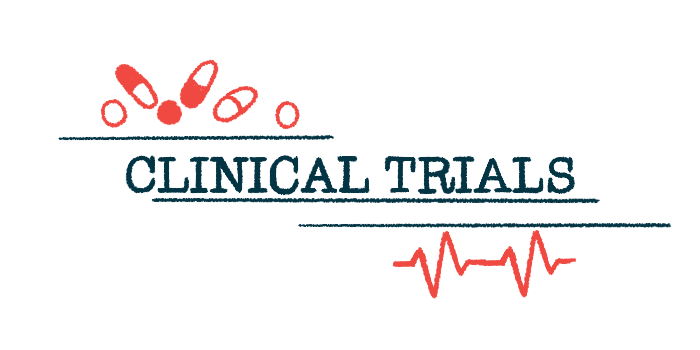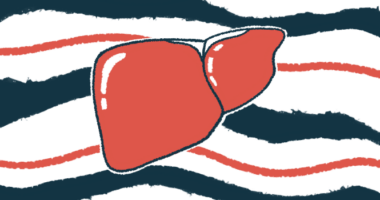Seladelpar lowers levels of molecule driving itch with PBC: Phase 3 trial
Blood levels of interleukin-31 fell by 52% in patients treated at high dose

Seladelpar, an experimental oral therapy by CymaBay Therapeutics, significantly lowered blood levels of an itch-associated molecule called interleukin-31 (IL-31) in people with primary biliary cholangitis (PBC) treated in a Phase 3 clinical trial.
This drop in IL-31 levels also was found to significantly associate with a previously observed reduction in patient-reported itching, or pruritus, among ENHANCE trial (NCT03602560) participants treated with seladelpar.
The study reporting this new analysis of trial data, “Seladelpar treatment reduces interleukin-31 and pruritus in patients with primary biliary cholangitis,” was published in Hepatology.
“Pruritus is a debilitating symptom for many people living with PBC, yet the underlying mechanism of itch is not well understood,” Andreas Kremer, MD, PhD, the study’s first author and a professor and head of hepatology at University Hospital Zurich in Switzerland, said in a press release from CymaBay.
IL-31, an inflammatory cytokine, is known for properties that promote itching
“These latest data are critical in advancing our understanding of potential mediators of cholestatic itch and suggest that IL-31 may have a role in driving pruritis in people with PBC. While current treatments for cholestatic pruritus remain limited, these data can help inform potential novel therapeutic approaches,” Kremer added.
Cholestatic itch is related to cholestasis, or slowed or halted bile flow, which is a feature of PBC.
CymaBay submitted an approval request to the U.S. Food and Drug Administration in December covering seladelpar for the management of PBC, including itching in adults without cirrhosis or with well-compensated cirrhosis (Child-Pugh class A) who do not respond or are intolerant to ursodeoxycholic acid (UDCA).
Cirrhosis refers to severe and permanent liver scarring that affects the organ’s function and that is a serious potential complication of PBC. UDCA, also known as ursodiol and sold under the brand names Urso and Actigall, is the standard first-line therapy for PBC.
The company is asking for priority review of its application, which would reduce the FDA’s review period from the standard 10 months to six months. The regulatory request was supported by data from ENHANCE and other Phase 2 and 3 trials showing seladelpar could safely reduce disease biomarkers and ease patient-reported itching.
CymaBay also plans to submit similar applications with regulatory authorities in the European Union and the U.K. later this year.
PBC is an autoimmune disease characterized by chronic inflammation in the bile ducts, the series of tubes that transport bile, a digestive fluid, from the liver to the intestines.
Bile duct inflammation leads to cholestasis, bile buildup, and leakage of bile acids into the bloodstream, which triggers itching, a common PBC symptom. Still, the exact biological mechanisms of how bile leads to itch aren’t fully understood.
IL-31 is an inflammatory cytokine, or signaling molecule, that’s known to have powerful itch-inducing properties. Previous studies have shown that blocking IL-31 can ease itching in some skin disorders, but the role of IL-31 in PBC-related itch hasn’t been investigated.
Researchers conducted a post-hoc analysis of data from the Phase 3 ENHANCE trial to examine the relationship between IL-31 blood levels and patient-reported itch. A post hoc analysis is one that’s designed and carried out after the study is already over.
ENHANCE tested seladelpar against a placebo in 265 adults with PBC who didn’t respond to or were unable to tolerate UDCA treatment. Participants were randomly assigned to 5 or 10 mg of seladelpar or to a placebo, taken daily for about three months.
Data shows link between lower IL-31 levels, meaning easing of pruritus
Seladelpar is a first-in-class oral molecule designed to promote liver health by selectively activating the PPAR-delta protein. Previous preclinical and clinical findings support its ability to regulate genes involved in bile acid production, inflammation, and scarring.
Results from 161 participants with available IL-31 measurements showed that seladelpar treatment resulted in a dose-dependent reduction in blood IL-31 levels. Over three months, these levels decreased by 30% with the low dose of seladelpar and by 52% with the high dose, while they showed an average increase of 31% with a placebo.
At an individual level, more than 90% of patients given seladelpar’s high dose experienced a decrease in IL-31, whereas only about half of those on a placebo experienced a drop.
“The majority of patients treated with seladelpar 10 mg demonstrated a remarkably uniform reduction in IL-31,” the researchers wrote.
Statistical analyses also showed significant correlations between IL-31 blood levels and patient-reported itch scores at study’s start and over the three months. In other words, patients tended to report less itch when they had lower IL-31 scores, and vice versa.
Consistently, patients who experienced clinically meaningful reductions in pruritus demonstrated greater dose-dependent reductions in IL-31 levels than those without symptom lessening. An analysis of findings from a previous seladelpar Phase 2 trial (NCT02955602) showed consistent trends.
Finally, these Phase 3 data showed that lower IL-31 levels significantly associated with lower levels of bile acids in the blood, and vice versa.
“In this study we demonstrate that the improvement in pruritus from seladelpar treatment in patients with PBC is correlated with reductions in the known pruritogenic [itch-inducing] cytokine IL-31,” the researchers wrote.
This finding implies that reducing IL-31 levels may be one of the biological mechanisms by which seladelpar eases itching, which could have important implications for designing new treatments.
“Hopefully, IL-31 will be a guide for improved understanding of cholestatic liver diseases and facilitate therapeutic interventions in alleviating pruritus,” the scientists concluded.
Seladelpar previously was designated a breakthrough therapy in the U.S. for the treatment of PBC, including pruritis in adults with cirrhosis or with compensate cirrhosis. And it was granted orphan drug and PRIority MEdicine (PRIME) status in the European Union for treating PBC. These designations are meant to support and accelerate the therapy’s development and regulatory review.






